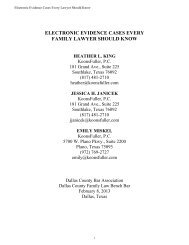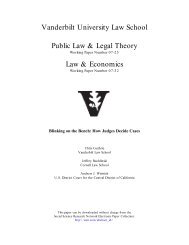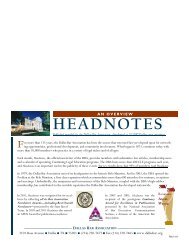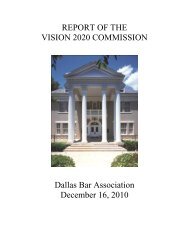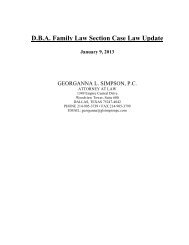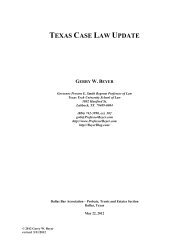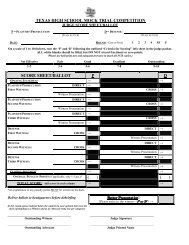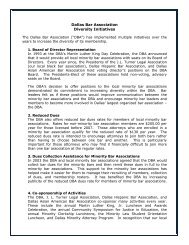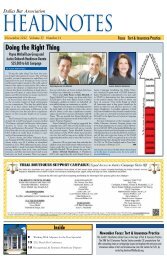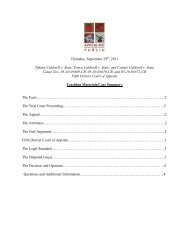subordination, nondisturbance and attornment agreements
subordination, nondisturbance and attornment agreements
subordination, nondisturbance and attornment agreements
You also want an ePaper? Increase the reach of your titles
YUMPU automatically turns print PDFs into web optimized ePapers that Google loves.
tenant remained in possession <strong>and</strong> sought a declaratory judgment construing the relative rights<strong>and</strong> obligations of the tenant <strong>and</strong> the mortgagee (who had purchased the mortgaged property atthe foreclosure sale). The trial court held for the mortgagee <strong>and</strong> ruled that the mortgagee had theunilateral election, following foreclosure, either to deem the lease terminated or to hold thetenant to the terms of the lease. On appeal, the court of appeals held that the non-judicialforeclosure had the effect of terminating the lease, unless the mortgagee <strong>and</strong> the tenant bothexpressly or impliedly agreed to continue the lease. Id. at 886-87.In ICM Mortgage Corporation v. Jacob, 902 S.W.2d 527 (Tex. App.—El Paso 1994, writdenied), the court attempted to clarify its holding in United General by requiring affirmativeaction manifesting consent to the creation of a lease. The court explained that foreclosureterminates an inferior lease. Id. at 531-532. Any l<strong>and</strong>lord-tenant relationship between the tenant<strong>and</strong> a purchaser at foreclosure of a superior mortgage is a new, independent l<strong>and</strong>lord-tenantrelationship (rather than continuation of the old lease/relationship), the terms of which, however,may be modeled implicitly on the tenant’s lease with the prior owner. Id. at 532-533. The courtstated that its use of the word “continue” to describe the existence of a post-foreclosure l<strong>and</strong>lordtenantrelationship in its United General opinion (i.e., to continue a lease after foreclosure) didnot imply that a foreclosing purchaser’s failure to take action to terminate the Jacob appellee’slease established (or, in the vernacular, “continued”) a l<strong>and</strong>lord-tenant relationship. The courtfound “irrelevant” the argument that the mortgagee failed to take action to terminate the lease inquestion <strong>and</strong> gave instructions that the lessee “sit tight” until it obtained clear title to theproperty. The court explained:Our focus (in United General) was the necessity for both parties to haveaffirmatively manifested consent to a new lease agreement, not to the extent towhich either had failed to object to the mere continuation of a previousagreement. To the extent we implied a different focus, we now disavow it. Id.at 533.This rule is consistent with the effect of foreclosure on other interests in real property: Subject tothe effect of the expressed or implied agreement of the parties, foreclosure normally cuts offinterests in real estate that are subordinate to the mortgage. See also Callewart v. KPT, Inc., No.05-95-01454-CV, 1996 WL 616436 (Tex. App.—Dallas, 1996, n.w.h.) (agreeing with the courtin Jacob <strong>and</strong> reiterating the general rule that upon foreclosure, a tenant’s lease is terminated).The parties do not, however, have to expressly articulate affirmative consent to a l<strong>and</strong>lordtenantrelationship. The parties’ conduct subsequent to foreclosure can effect an impliedagreement to create a tenancy. Peterson v. NCNB Texas National Bank, 838 S.W.2d 263 (Tex.App.—Dallas 1992, no writ), is a prime illustration. NCNB foreclosed on leased propertypursuant to a mortgage that was superior to the lease. A few days after the foreclosure, NCNBsent the tenant a notice advising of the change of ownership <strong>and</strong> directing the tenant to makefuture rental payments directly to NCNB. The tenant subsequently made two regular rentalpayments to NCNB. Approximately two months after the foreclosure, NCNB sent the tenant asecond, more formal letter in which NCNB expressly recognized the lease <strong>and</strong> sent a formrequesting the tenant formally to confirm the continued existence of the lease. The tenant did notsign the agreement NCNB tendered but made two more rental payments. Thereafter, the tenantD-SNDAs 11-10-07 - 4 -



